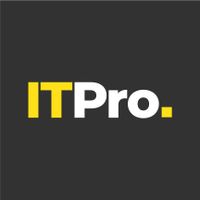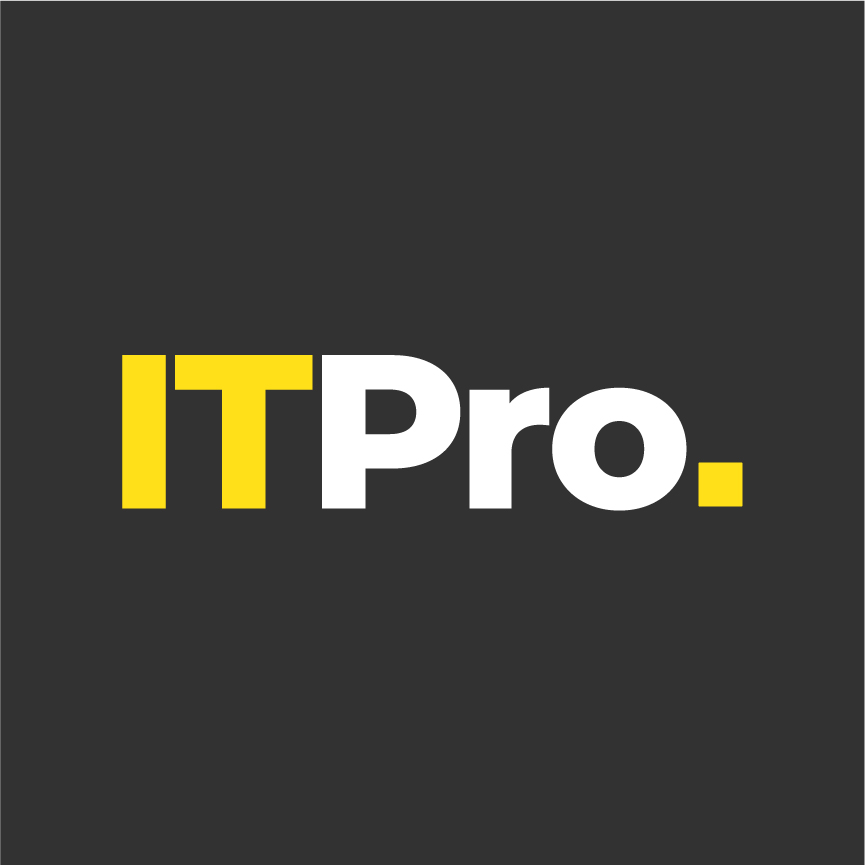Sponsored by xFusion
How xFusion is changing the way we power AI and HPC with ‘Black Technology’
Power, data, and heat efficiency are all major sticking points for AI – but proprietary technology from xFusion is seeking to address all three
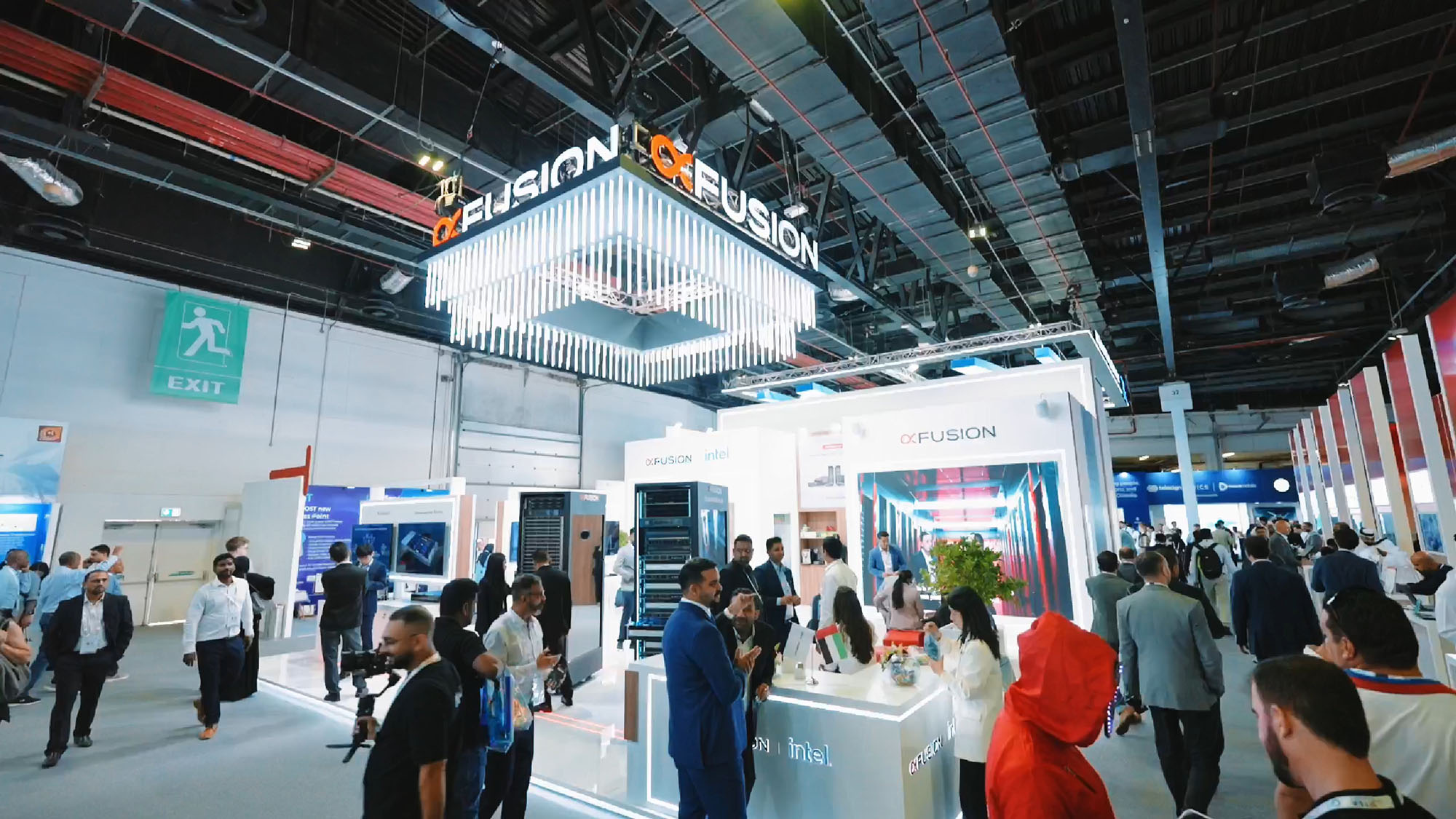
GITEX Global 2025 will be a defining moment for the tech industry, as organizations from around the world display the latest innovations in AI to push the boundaries of what’s possible at the enterprise level.
Held in Dubai from 13-17 October, attendees will have the chance to scrutinize advancements in AI, which has dominated discussions across the sector. Business leaders will be particularly vigilant for innovations that help them lower the cost and time to deploy AI solutions, the benefits of which are still locked behind significant upfront costs.
Indeed, though AI expansion is increasing, business adoption of the technology is hampered by hurdles such as power demand, the logistics of cooling server racks, and the rate at which data can be effectively transferred between racks to empower AI training and inference.
One company looking to address these issues is xFusion, a Singapore-headquartered computing infrastructure and services provider. It is working to accelerate digital transformation and empower organizations to expand their AI infrastructure without incurring unwelcome costs via poor operating conditions for chips, high energy bills, and data transfer bottlenecks.
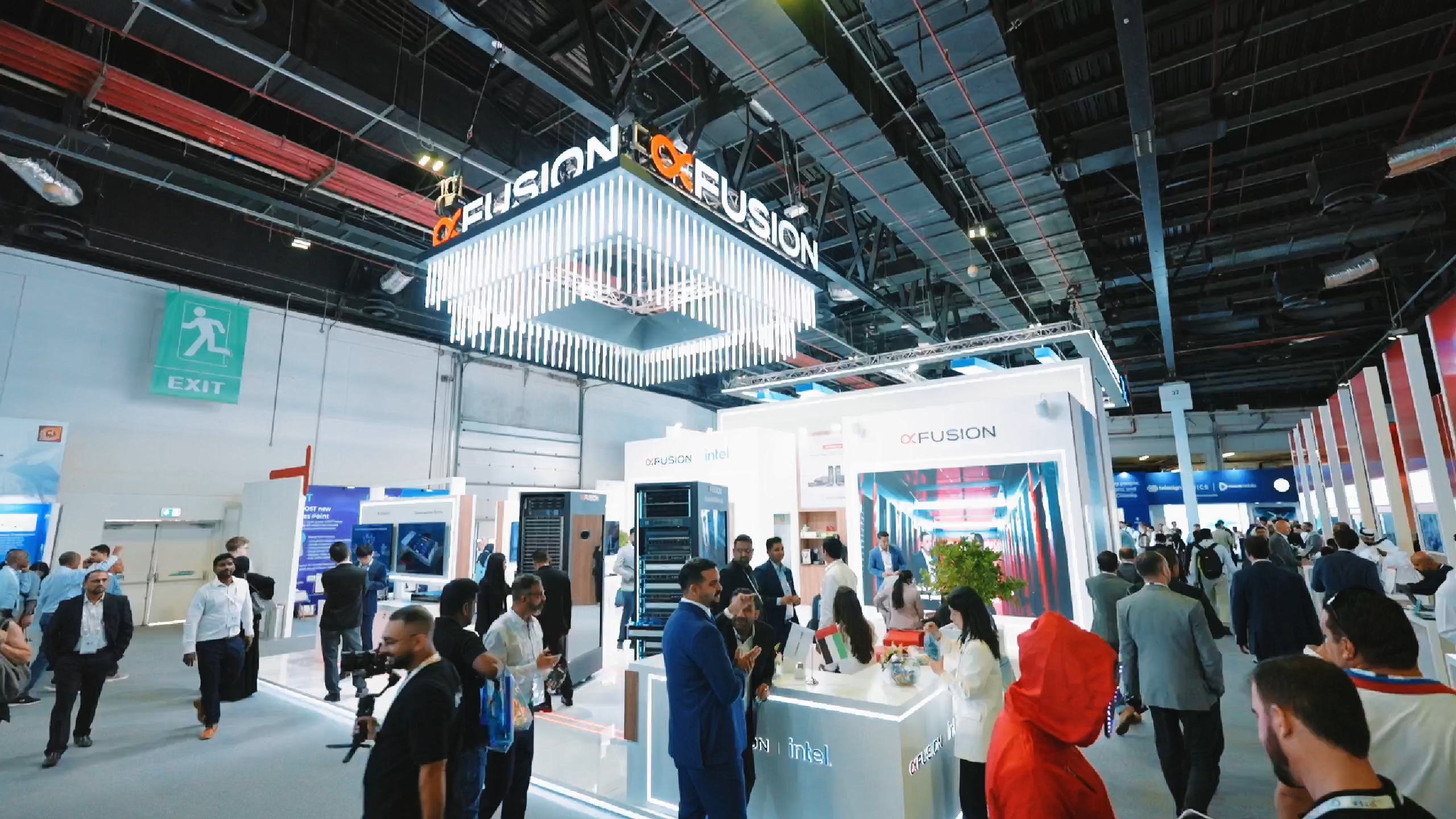
xFusion at GITEX 24
Within Hall 20, at Booth B10, xFusion will demonstrate its ‘Black Technology’, a proprietary tech stack for more efficient liquid cooling, better energy efficiency, and high-speed data interconnections.
The star of the show will be the FusionServer V8, its latest rack server offering intended for AI computing, high-performance computing (HPC), as well as virtualization, big data processing, and enterprise application needs.
How FusionServer V8 solves major AI challenges
All the world’s major chip designers are pushing the ceiling of performance right now, as they produce new designs that deliver the raw computational power necessary to run today’s largest AI models.
But as chips become more powerful, they also draw more power – and produce ever greater amounts of heat as a byproduct. In the past, data center operators could rely on air conditioning to cool their racks, but with today’s power-hungry chips, this is no longer sufficient.
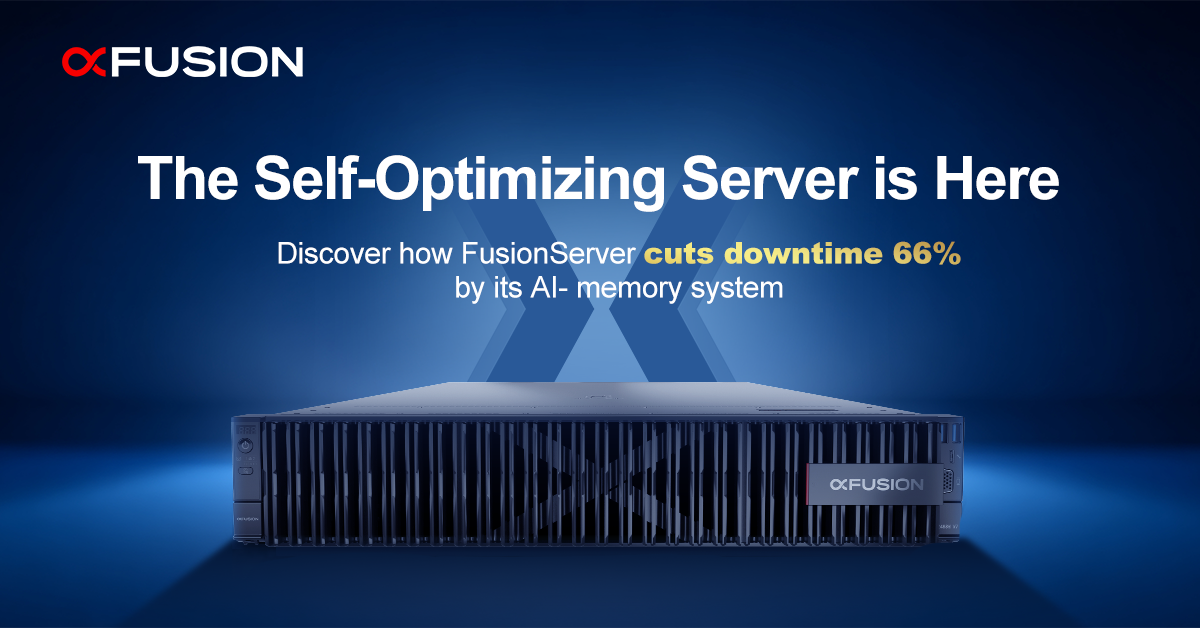
The FusionServer V8’s Black Technology approach achieves 850W air cooling and 1500W direct liquid cooling for single chip heat dissipation respectively, alongside in-house Black Technology thermal materials that unlock 200% greater thermal conductivity and 10% faster heat transfer from the rack.
Heat isn’t the only thing that needs to flow smoothly throughout a data center. It’s become common knowledge for business leaders that data has to be carefully prepared and formatted to be used for AI and data analytics, but all this hard work can easily be squandered if one’s data infrastructure isn’t up to the task of processing it in the most efficient way possible.
Even a minor delay or pause in the transfer of data throughout a rack and wider data center can lead to a major bottleneck in output and overall system efficiency. Imagine how even intermittent traffic on a highway can delay one’s overall journey significantly; designing the right interconnection hardware is like planning the road to spread cars out more efficiently, as well as adding lanes for priority travelers.
In short, businesses have to get their interconnectors and connectivity completely sorted if they want to reap the benefits of their expensive data center chips.
Fit-for-purpose, custom design
xFusion’s connector modules use a custom design that delivers 10% more I/O density – comprising data and up to 150W of power delivery – in a compact package that’s 30% smaller overall than the connectors of competitors.
At GITEX, xFusion will demonstrate this technology to in-person attendees, who will also be able to view the firm’s market-leading, proprietary printed circuit boards (PCBs) that were designed to optimize performance for any chip platform.
In a sector moving as fast as data and AI, these open-ended designs help businesses future-proof their infrastructure. The compact and efficient flow of power and data, in particular, forms the lifeblood of any data center.
The most important challenges to overcome within the field of AI are the immense power consumption of the hardware and infrastructure necessary for AI deployment. Indeed, Gartner predicts AI data centers will use 500 terawatt hours (TWh) of power per year by 2027, close to Germany’s entire annual electricity production per International Energy Agency (IEA) data.
Using this much power has profound environmental and economic costs. Energy is a major cost for data center operators - often more than 50% of their OpEx - who have to power both their racks and the cooling equipment necessary to keep all hardware running.
Within the xFusion’s Black Technology stack, technologies complement one another, and this is a prime example. While the previously mentioned thermal advancements work to improve overall heat transfer within the firm’s racks, at GITEX Global 2025, it will also demonstrate its significant advancements in energy efficiency.
To tackle this issue head-on, xFusion combined a number of known and developing techniques with its proprietary technological approaches to form its in-house power supply units (PSUs).
The xFusion Titanium PSU was built to include components made from the semiconductor Gallium Nitride (GaN), offering marked improvements in enterprise energy efficiency, and can save businesses over 1,400 kWh of electricity than the industry-respected Platinum PSUs.
Platinum PSUs are defined as those with an efficiency of up to 94% – xFusion’s Titanium PSUs achieve 96.2%. Because these PSUs are liquid-cooled, they can also be individually ‘hot swapped’ – removed while the server they’re processing is operational – without disrupting operations.
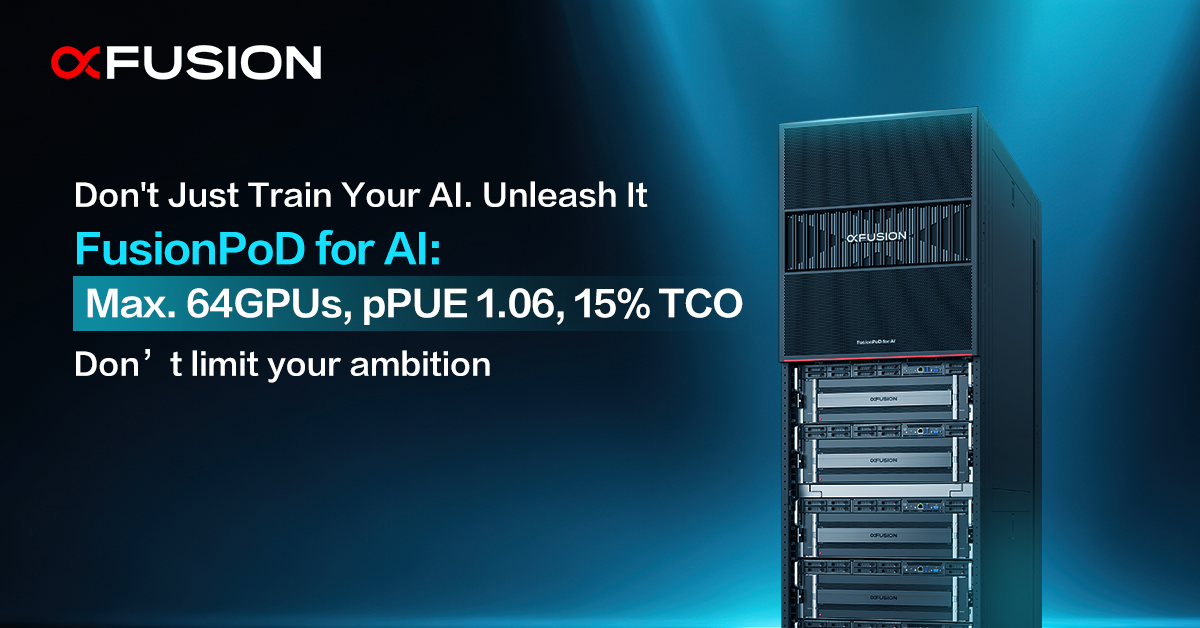
This improves the cost efficiency of the rack, as repairs can be carried out without incurring any server downtime. In xFusion's high-density compute racks like the FusionPoD for AI, up to 36 PSUs can be run in parallel to regulate energy consumption and cost across a rack.
With this reduced energy consumption, xFusion is also cementing itself as a key player in the data center sustainability space. IT leaders don’t want to sacrifice their ESG goals in order to unlock AI and nor do they have to. These advancements show that with considered investment, organizations can meet their expanding compute needs without turning their energy use figures on their head.
Once the physical, infrastructure-linked hurdles of AI are solved, businesses will be able to fully focus on making the most of this transformational technology. One of the chief benefits of AI is its ability to scale to meet enterprise needs, empowered by cloud computing and storage.
This can only be achieved through focused investment that liberates business leaders from siloed, slow, and inefficient racks and legacy systems.
Opportunity to experience innovation in action
xFusion’s world-leading, powerful servers are a result of serious R&D investments in materials science, combined with power electronics and signal integrity.
Hearing about xFusion’s advancements through stats gives a good initial idea of the work the firm is doing across the major roadblocks for AI adoption. But seeing Black Technology in person at GITEX Global 2025, Hall 20, Booth B10, will give leaders a rare opportunity to look under the hood at these new racks in person.
Outside of seeing the technology in action themselves, organizations can take inspiration from others who have experienced the value on offer first-hand. Take Entreprise Nationale de Géophysique (ENAGEO), Algeria’s leading oil firm as but one example of how xFusion’s innovative technologies have helped set it up for success.
It faced real challenges with data center equipment stability due to being located in the Sahara Desert with its super high temperatures. In addition to benefiting from superior heat cooling functionality, ENAGEO made use of xFusion’s AI Memory Fault Self-Healing Tool, which reduced downtime by some 66%, further boosting operational reliability and efficiency.
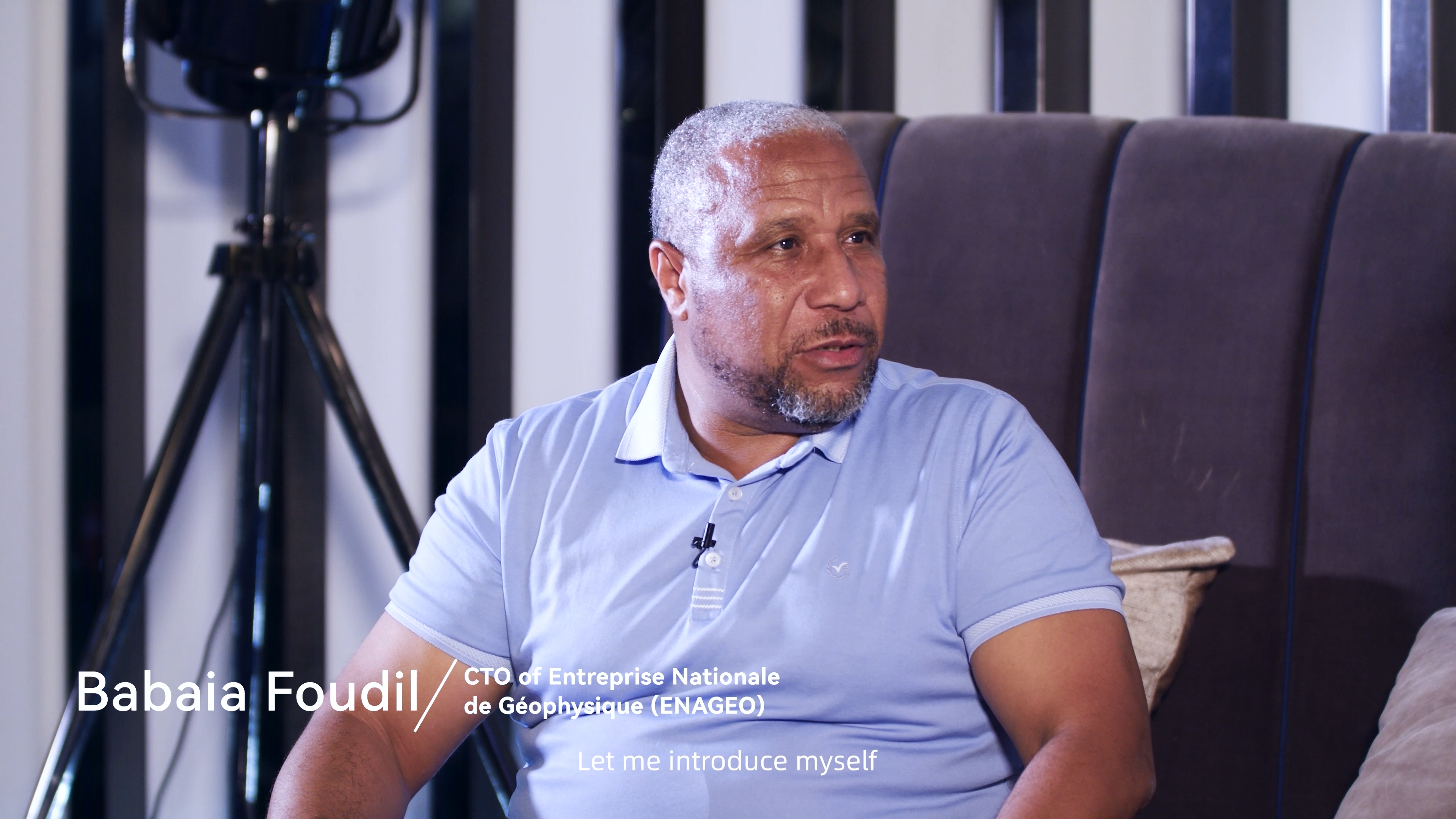
Babaia Foudil, CTO, ENAGEO
“We do not work in a conventional operation center, we work in seismic sites, in isolated areas, with very difficult climatic conditions. Therefore, we really need equipment that can meet our needs, respond to these conditions and particularly the very high temperature during the summer period,” said Babaia Foudil, CTO of ENAGEO.
“Throughout the project, xFusion provided comprehensive support, from equipment selection and installation to ongoing maintenance. Their expertise and service ensure we can maintain business continuity and data safety even in the most challenging environments."
Stay tuned with xFusion
Homepage: https://www.xfusion.com/en
Customer Stories: https://www.xfusion.com/static/en/cases
LinkedIn: https://www.linkedin.com/company/xfusion-global/
Facebook: https://www.facebook.com/xFusion-Global-100472719293901
X: https://x.com/xFusion_Global
YouTube: https://www.youtube.com/channel/UCqwN6fbzONtrquKA6UEQfMw
Sign up today and you will receive a free copy of our Future Focus 2025 report - the leading guidance on AI, cybersecurity and other IT challenges as per 700+ senior executives
ITPro is a global business technology website providing the latest news, analysis, and business insight for IT decision-makers. Whether it's cyber security, cloud computing, IT infrastructure, or business strategy, we aim to equip leaders with the data they need to make informed IT investments.
For regular updates delivered to your inbox and social feeds, be sure to sign up to our daily newsletter and follow on us LinkedIn and Twitter.
-
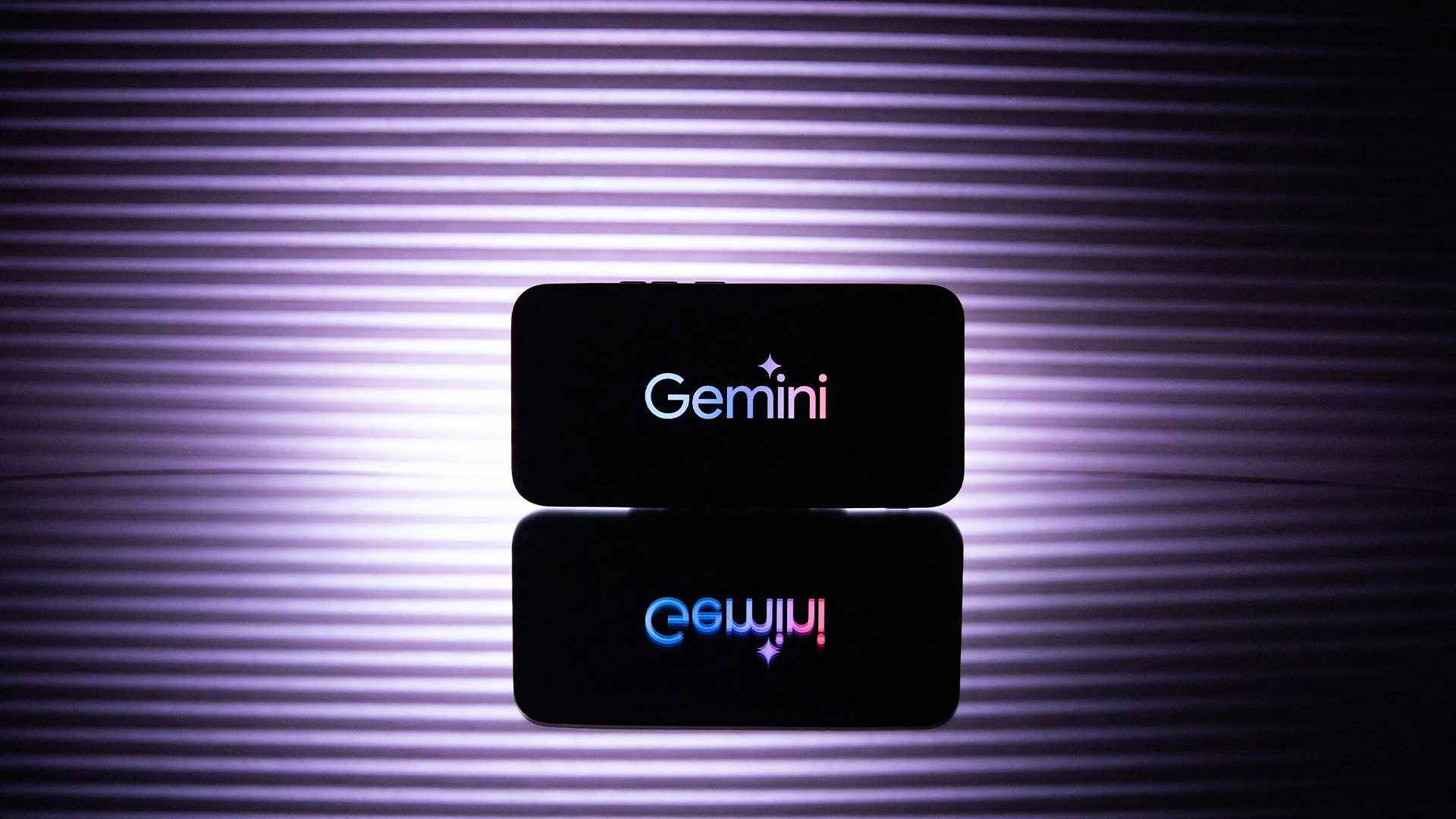 Google launches flagship Gemini 3 model and Google Antigravity, a new agentic AI development platform
Google launches flagship Gemini 3 model and Google Antigravity, a new agentic AI development platformNews Gemini 3 is the hyperscaler’s most powerful model yet and state of the art on almost every AI benchmark going
-
 Microsoft unveils Foundry overhaul for managing, optimizing AI agents
Microsoft unveils Foundry overhaul for managing, optimizing AI agentsNews The hyperscaler is aiming to simplify AI agent oversight, as organizations grapple with the increasingly complicated business of processing and paying for outputs
